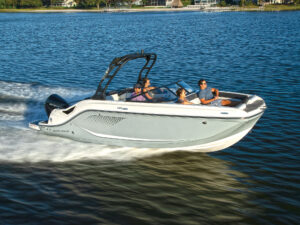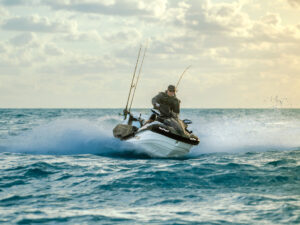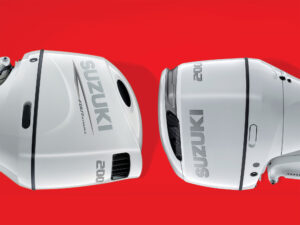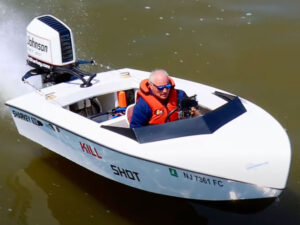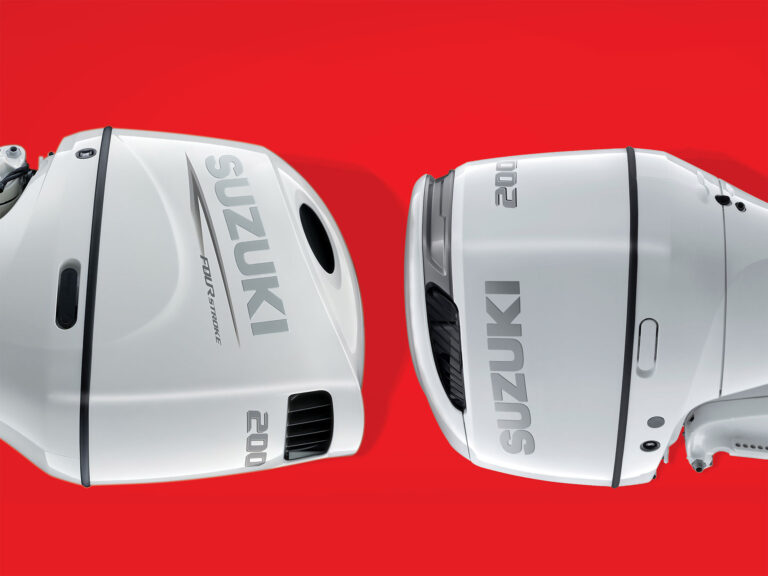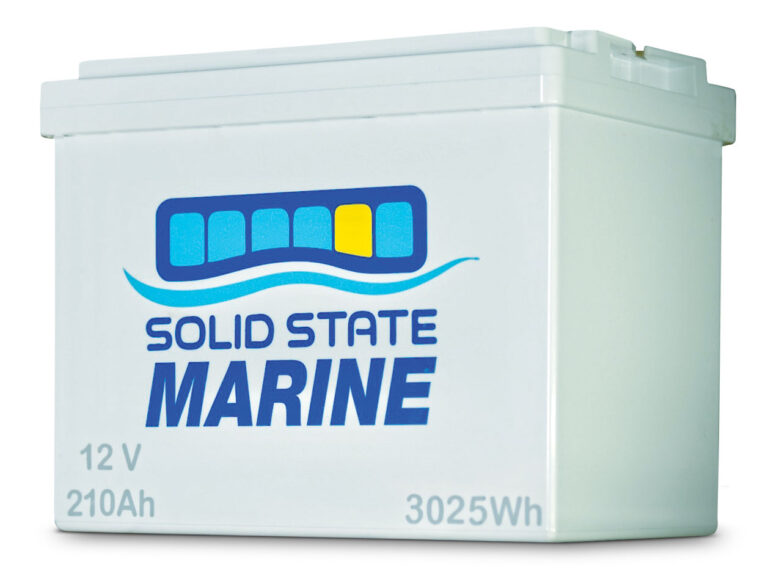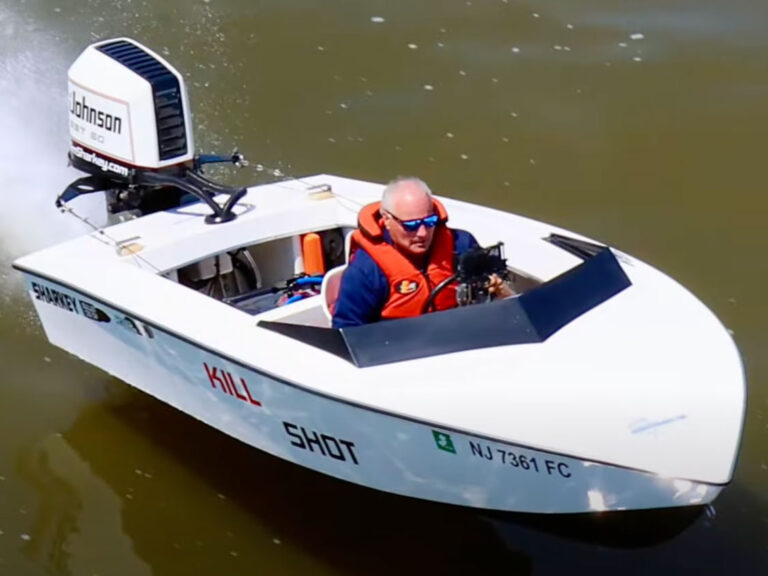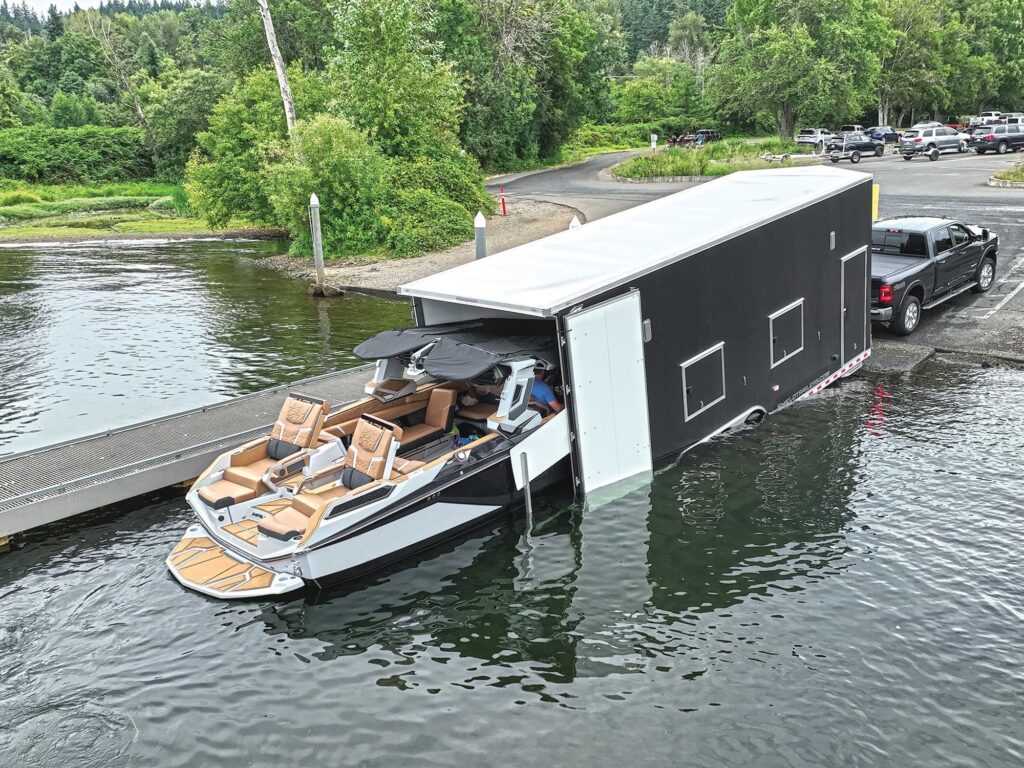
You may never have pondered what boat trailers will look like in the future, but at least one company has given this a lot of thought, and has designed trailers that depart radically from conventional thinking.
Boat trailers ranging from 26 to 30 feet in length from Nebraska-based Shield Trailers feature enclosures akin to today’s toy haulers used by off-road enthusiasts. The concept was born in 2021 of a desire to transport a new boat across four big Western states and the Rockies, and deliver it in pristine condition to Arizona.
Today, Shield offers two basic models: the Standard tandem-axle trailer for craft such as bass boats with beams as wide as 96 inches, and the Wide version for watersports boats up to 102 inches wide.
These trailers may portend of things to come; enclosures add a number of benefits. An enclosed trailer keeps your boat protected from the elements, including damage from hail, flying rocks, road grime, bug splatters, and debris while you’re towing, says John Stone, director of sales for Shield. It also protects your boat while in storage, negating the need for a boat cover. It keeps the boat clean and protected. It also thwarts thieves and vermin.
Shield can customize trailers with extra room forward for watersports equipment, fishing tackle, coolers and even beds. The trailers can be optioned with 110-volt AC plug-in ports for air conditioning or a space heater to pamper you and your boat. Climate control can pay off if you’re performing boat maintenance on a hot summer day or cold winter evening. Abundant LEDs illuminate the interior.
Launching and loading is designed to be a one-person operation. Before backing the trailer down the ramp and into the water, you need to lock open the rear double doors, and then swing out a pair of guide posts and unfold a double-roller at the back of the trailer floor.
To prepare for launch, remove the lock from the bow eye and unhook a pair of transom straps. With an outboard boat, you also need to disconnect a built-in transom saver. Once the trailer is backed into place, you enter the trailer from a side door, step into the boat, and use a remote control for an electric bow winch to slide the boat down into the water on a set of roller bunks on the floor of the trailer. Once afloat, unhook the winch strap and stow the hook on a ceiling eye. Then start the motor and back away, dock the boat, and retrieve and park your rig. Loading up is a matter of reversing this process.
Height is limited inside the trailer to 9 or 10½ feet, depending on your preference. “You’re not going to fit a boat with a T-top inside,” Stone points out. “Wakesports towers and Power-Pole shallow-water anchors need to be lowered before winching the boat into the trailer.”
Even with 100 percent aluminum construction, Shield’s enclosed trailers weigh significantly more than conventional trailers. The Wide model, for example, tips the scales at 6,200 pounds without a boat. “You will need a ¾-ton pickup to tow these,” Stone says. “We use a Chevy 2500 HD diesel truck.” In addition, the purchase price is significantly higher. The Shield’s Standard trailer starts at $45,995, while the Wide model starts at $72,995.
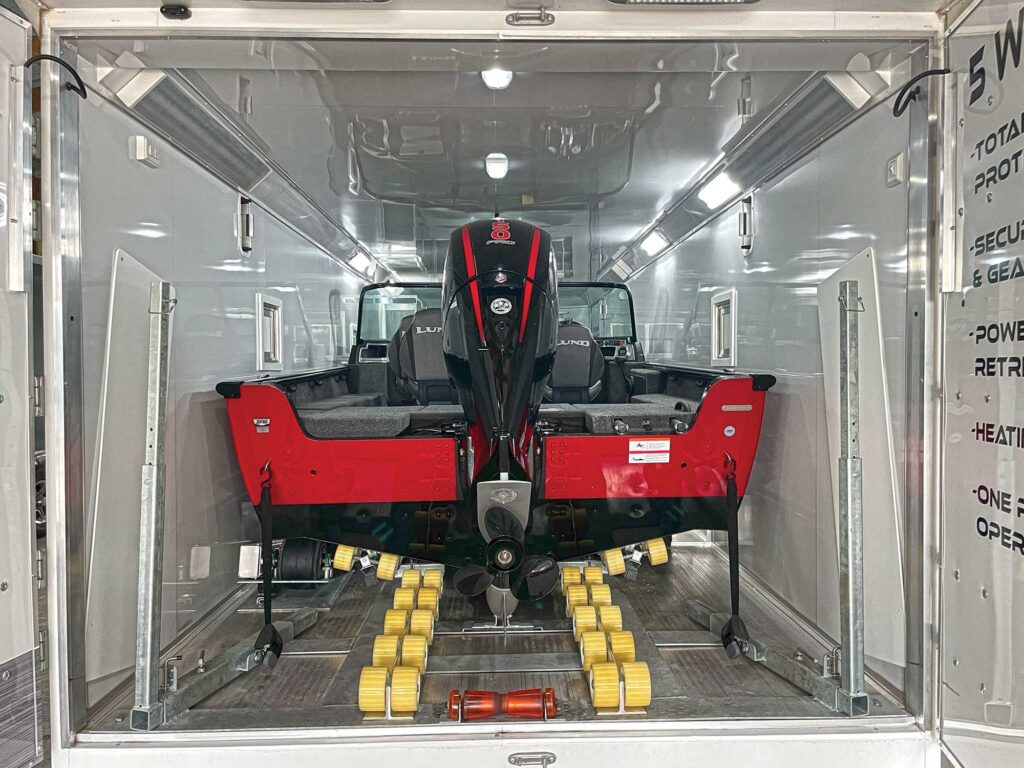
Read Next: Expert Tips for Backing a Trailer
Washing a boat inside the trailer might look cramped, but there’s actually plenty of access, Stone says. “When you open the two sets of doors on each side, the back doors, and all the ports and windows, you have 360-degree access.” Tilting the front of the trailer up ensures that water runs out the back, just as it does after launching and loading. For running the engine on a garden hose, you can slide the boat out the back about halfway, then slide it back in when you’re done.
Finally, to ensure safety when fueling, open all of the trailer doors and windows when filling up. Shield installs a window or door next to the fuel-fill fitting to simplify fill-ups at gas stations.
If nothing else, Shield’s forward-looking concept sparks the imagination, offering a glimpse down one highway that could someday lead to future of trailer boating.

